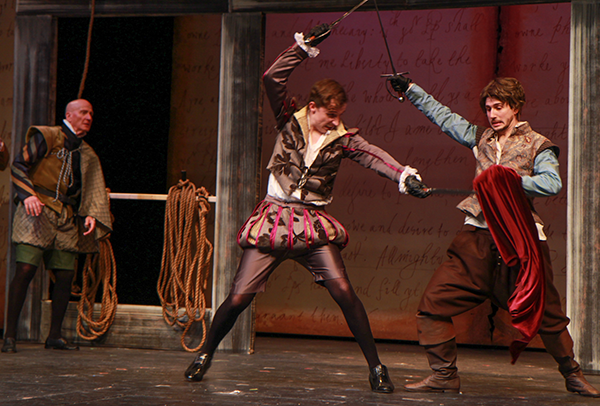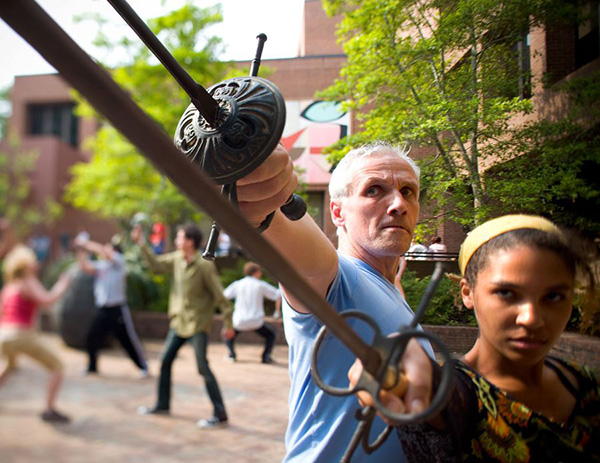By Evan Parry, Fight Choreographer, Associate Professor of Theatre at the College of Charleston

When Julian Wiles asked me to choreograph the sword fights for Shakespeare in Love, I jumped at the chance. Having acted, directed, or choreographed numerous productions of about half of Shakespeare’s plays, I relished the opportunity to stage fights which included among the combatants the great author himself, as well as some of the famous actors and writers of his time: Marlowe, Burbage, Alleyn, among others. The film Shakespeare in Love had affected me powerfully on its release, and still does when I watch it today. Being involved with this production, and with Charleston Stage, was an easy choice to make.
The issues with staging these sword fights are many. Of particular importance is the issue of safety. While swashbuckling sword fights often look like great fun (and they are) it is critical that they are staged safely. We began with daylong workshops in January and have been working on the swordplay in Shakespeare in Love for the last 3 months.
First off we wanted the fights to seem authentic and that meant having the right weaponry. The late sixteenth century was a period when people of some means wore the rapier for daily use. The rapier is a light, double-edged, pointed weapon, noted for its quickness and versatility. It is a weapon which could effectively both cut and thrust, which you will see in our fights. I had some rapiers available, but Mr. Wiles was interested in beginning to purchase swords (and two daggers) to form an armory of stage weapons. Also, what is called the “Big Fight” in Act 2 required a lot of people fighting, which meant many weapons.
While we knew we wanted some flashy swordplay, we also wanted to use the fights to help tell the story. Each of the three fights has a different story to tell. Shakespeare and Marlowe are chased by guards from Viola’s balcony in a comic encounter. Another fight combines a kind of keepaway chase for the manuscript of Romeo and Juliet, as well as a free-for-all between two acting troupes, using some slapstick as well as serious sword techniques. The last fight, between Shakespeare and his rival in love, Lord Wessex, however, is deadly serious… most of the time. Each of these fights tells a different story about different (and dynamic) characters.
Don’t miss your chance at seeing these sword fights on stage at the Historic Dock Street Theatre. Shakespeare in Love performances run April 6th – April 29th and ticket sales are available online by clicking here.

